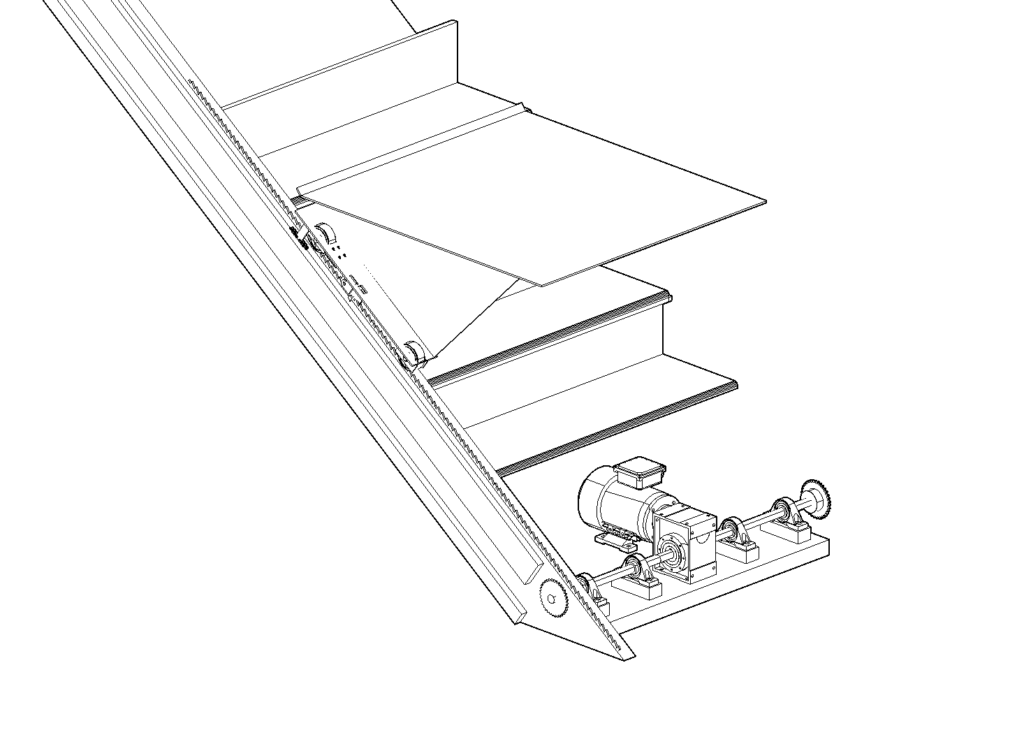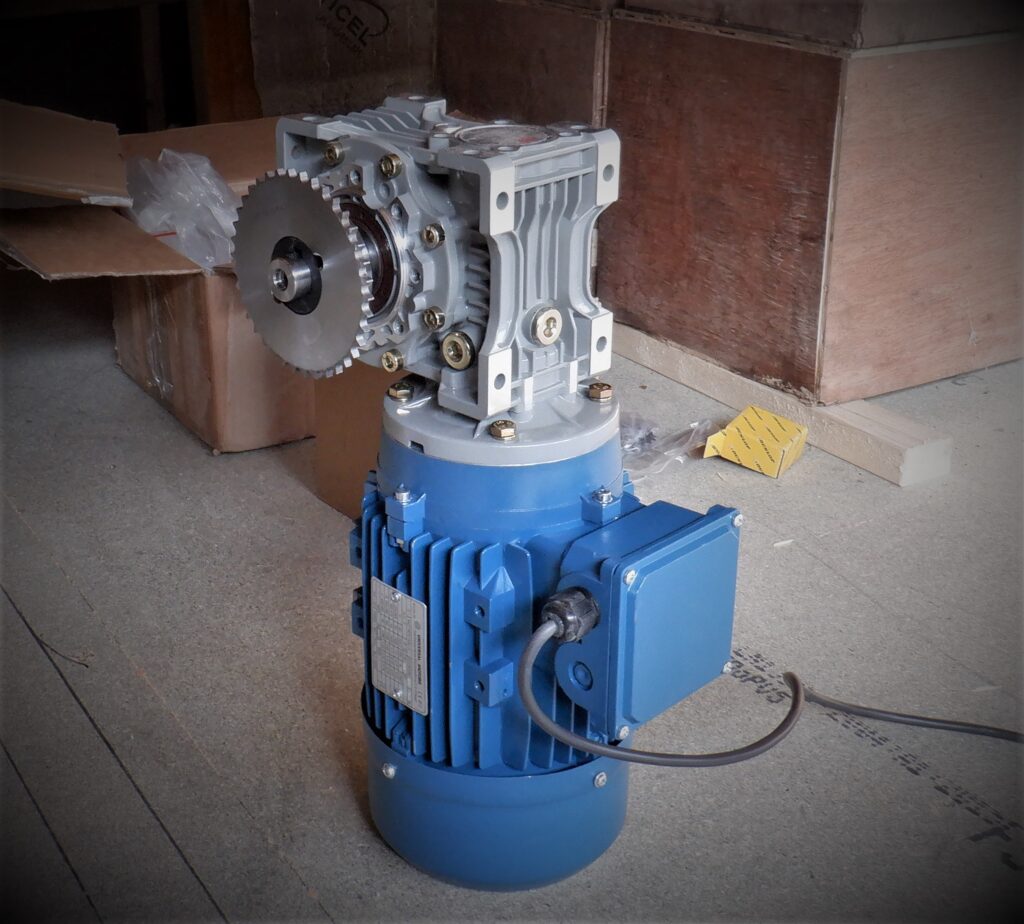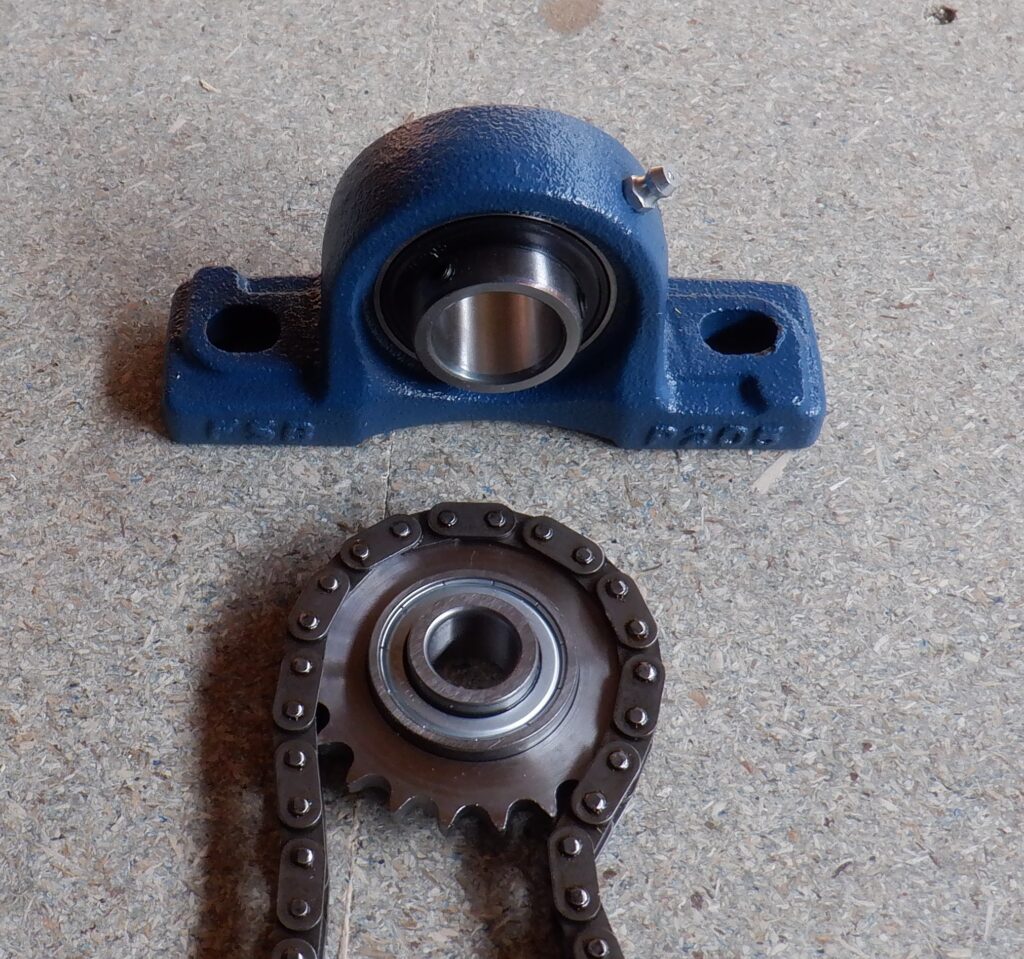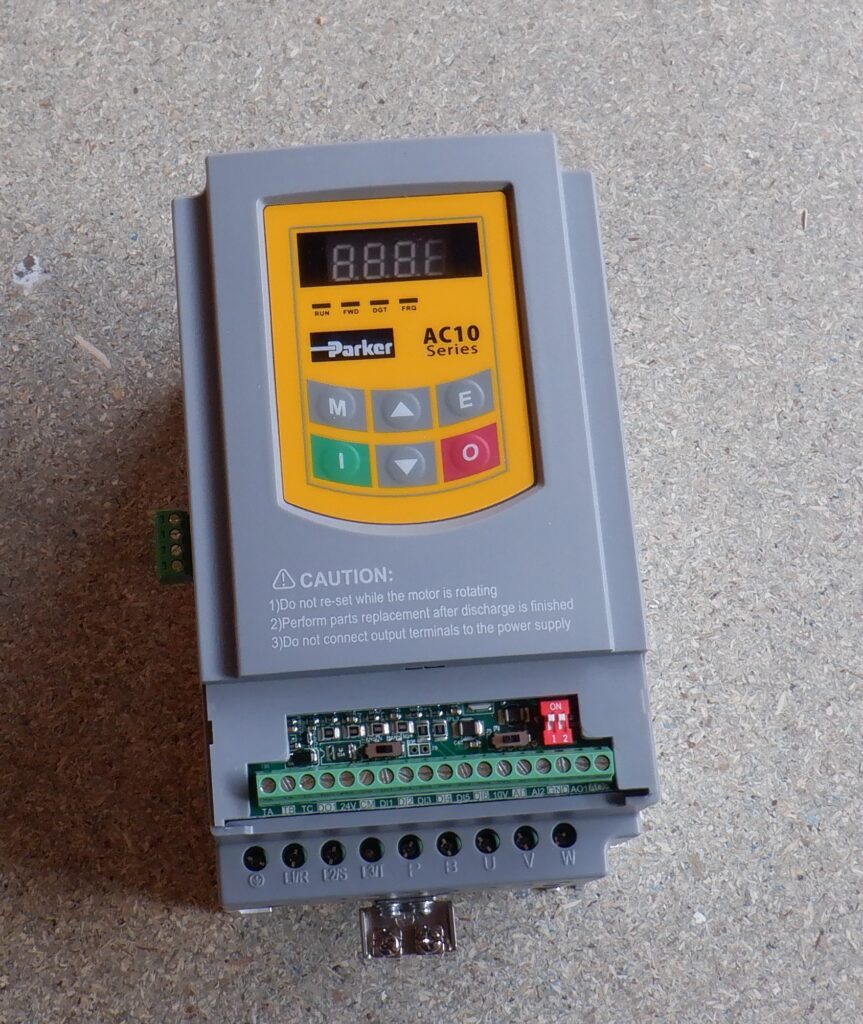This Monday morning saw the arrival of the electric motor, the gearbox, chain, cog wheels and the electronic controller. All this equipment is going into the Stair Lift unit to drive a moving platform system for our stairs. This device will help people and objects climb to the first floor and back again. We always wanted a stair lift design that is built into the fabric of the house, rather than a ugly bolt-on solution that virtually everyone else has to have. So we went for a flat-bed platform design as oppose to a chair, thus enabling a person in a wheelchair to have independent freedom to go upstairs at their own convenience and also allow the transport of larger and heavier items to be lifted up (or down) to the first floor.
To this aim, we designed and measured the power and torque needed to lift 250kg at a speed to give a journey time of 5 seconds. The weight has to include the mass of the platform and its support framework and wheels, we couldn’t design in the counter-balanced weights to cancel out the platform because there was not enough room to have another moving solid ballast hidden and safely out of the way of fingers etc. But the electric power to drive the combined load is only for an occasional use and the cost will be minimal in the long run.
The motor is a 3-phase AC 240V 1.1kW type that bolts into a heavy duty 15 to 1 ratio gearbox, a worm drive design that has the built-in advantage of providing a brake to hold the platform when electricity is lost to the motor but we do also have other safety measures incorporated into our design too. The gearbox will drive a 25mm thick shaft that will go out to the two cog wheels which in turn will drive the 11metres 3/8inch chain which in turn is attached to the platform.
The electronic controller, called a Variable Frequency Drive (VFD), which is a high voltage sine wave generator and produces three separate outputs to drive the motor, with a variable frequency range from 1Hz to 60Hz. This changes the rotation rate, whilst maintaining full torque.
We did some electrical tests but we discovered that the electrical filter design in these VFDs has a bad side-effect to the regular domestic RCD safety switches we have and kept tripping them. After some research on the web, learning about this design philosophy which is all to do with suppressing electrical noises being generated by the inverter and the motor, so unfortunately these industrial class of equipment needs a direct connection to the mains electricity on their own circuit and fuse breakers. We don’t have one of those which means we need to hire an electrician to come and add another consumer unit to our mains switchboard before we can carry on testing the motor etc.




